Updated Information
Categories
Popular
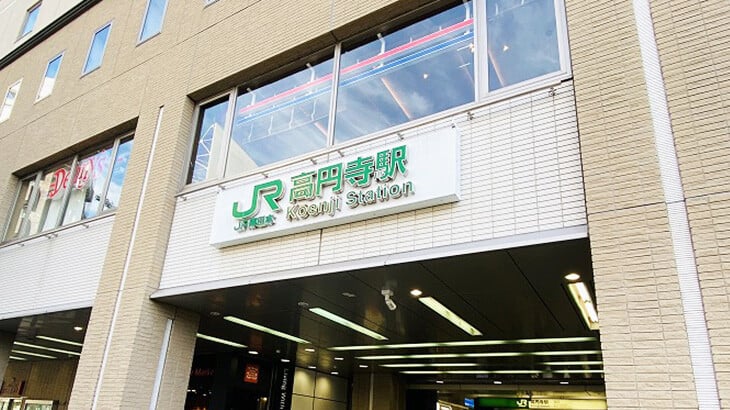
Exploring Koenji: A Harmonious Blend of City Convenience and Creative Culture
Exploring Tokyo

【2023】 Explore the five most captivating Christmas light displays in 2023 with detailed guides all here!
Exploring Tokyo
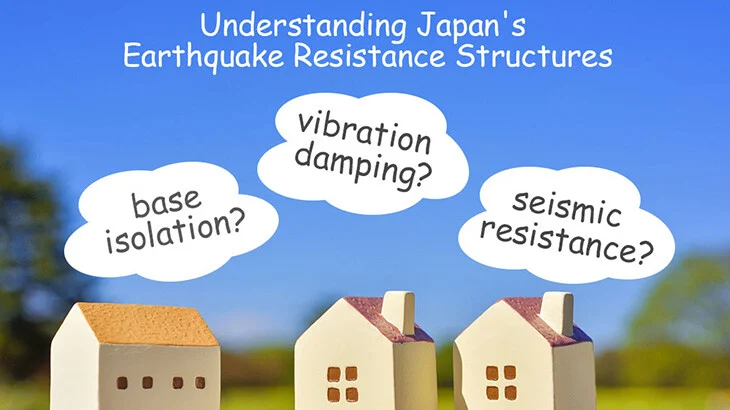
Essential Knowledge for Property Investment in Japan (Part 2): Understanding Japan’s Earthquake Resistance Structures and Technology
Property Knowledge

What is the tendency of Land Price in Japan in 2023?
Market Information
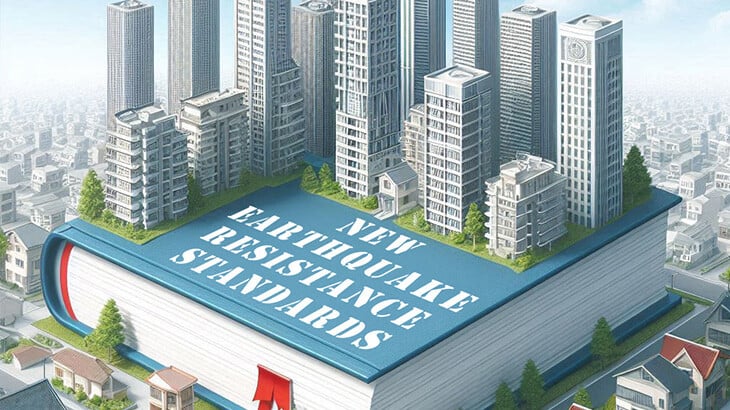
Essential Knowledge for Property Investment in Japan (Part 1): Understanding Japan’s Earthquake Resistance Standards
Property Knowledge
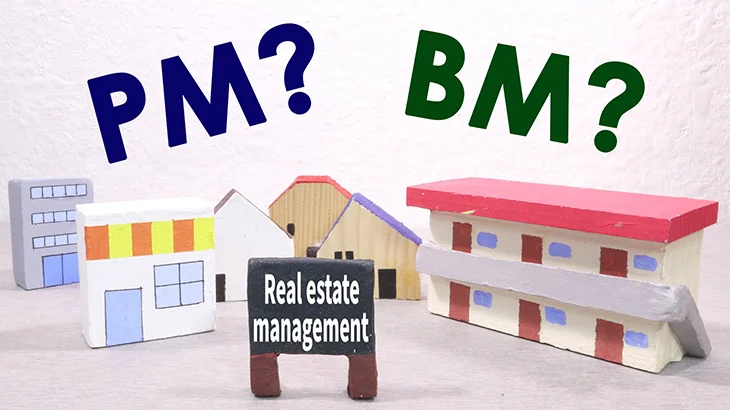
Essential Knowledge for Overseas Investors in Japanese Property Management
Property Knowledge
Essential Knowledge for Property Investment in Japan (Part 2): Understanding Japan’s Earthquake Resistance Structures and Technology
This article will detail the three main earthquake resistance technologies used in Japanese construction, including seismic resistance technology (耐震), vibration damping technology (制震), and base isolation technology (免震). We will analyze the advantages and disadvantages of these earthquake resistance technologies, hoping to provide a deeper understanding of the earthquake resilience of Japanese buildings.
Data indicates that 20% of the world’s earthquakes occur in Japan, largely due to its position along a tectonic plate boundary where seismic activity is frequent. Therefore, it is crucial for potential property buyers in Japan to have a fundamental understanding of earthquake-resistant construction technologies. These technologies encompass building design, material selection, and structural integrity, all aimed at ensuring that buildings can endure seismic forces during an earthquake, thereby safeguarding the safety of residents and their properties. Japan’s earthquake-resistant construction technologies have continuously evolved and improved, not only aligning with government standards but also significantly enhancing the safety and reliability of buildings. For those considering property investments in Japan, comprehending these earthquake-resistant technologies is essential for selecting secure and dependable properties.
■ Main Earthquake Resistance Structures in Japan

As mentioned in the previous article ” Essential Knowledge for Property Investment in Japan: Understanding Japan’s Earthquake Resistance Standards and Technologies (Part One),” Japan, being a country prone to earthquakes, has experienced significant destruction and loss of life due to numerous seismic events. However, thanks to advanced technology and relentless efforts, Japan has achieved remarkable accomplishments in earthquake resistance technologies.
Japan’s earthquake resistance technologies can be traced back to traditional constructions, such as temples and wooden structures, which exhibit excellent seismic performance. With ongoing technological advancements, modern earthquake resistance technologies have made significant breakthroughs in various aspects. Currently, Japan’s earthquake resistance technologies are mainly divided into three categories: seismic resistance technology (耐震), vibration damping technology, and base isolation technology (免震). The application of these technologies not only enhances the safety and durability of buildings but also plays a crucial role in urban planning and disaster prevention and mitigation.
The primary measures for addressing earthquakes consist of the following three types of structures: seismic resistance, which strengthens buildings to withstand vibrations; vibration damping, which utilizes devices like dampers to absorb seismic energy; and base isolation, which reduces shaking by separating the building from its foundation. In the following sections, we will explore the characteristics of these structures, along with their respective advantages and disadvantages.
■ What is Seismic Resistance Structure?

Seismic resistance structures are designed to withstand earthquake vibrations by reinforcing buildings. This technology involves adding cross-bracing in walls or using metal reinforcements at structural joints to enhance the overall strength of the building. As a result, the structure can resist the seismic forces generated during an earthquake by absorbing and dispersing the energy, thereby reducing damage and preventing collapse.
The seismic forces primarily act on heavy parts of the building, such as floors and roofs, so it is necessary to reinforce the entire structure comprehensively, including columns and beams that support the floors and roofs. Seismic resistance structures are the most common structural form and are widely used in various types of buildings, including detached house, apartments, office buildings, and schools.
With the application of seismic resistance technology, buildings can effectively withstand seismic forces during earthquakes, reducing damage and ensuring the safety of occupants. As scientific and technological advancements continue, the design and materials of seismic resistance structures are also constantly improving, further enhancing the earthquake resistance and safety of buildings.
■ What is Vibration Damping Structure?

During an earthquake, the upper levels of high-rise buildings and towers tend to experience significant shaking. Therefore, these structures are particularly suited for employing damping technology to mitigate the shaking experienced by the upper portions during seismic events. In recent years, vibration damping structures have also begun to be used in the construction of detached house, further enhancing their earthquake resistance.
By applying vibration damping technology, buildings can more effectively reduce shaking during earthquakes, improving safety and comfort for residents. As technology continues to evolve, the application of vibration damping structures is also expanding across various types of buildings.
■ What is Base Isolation Structure?

Base isolation structure is a structural technique that separates a building from its foundation. While the building does not float in the air, isolation devices are installed between the building’s foundation and the ground to absorb seismic vibrations, effectively isolating the building from the ground. This significantly reduces the impact of earthquakes on the building, as the seismic vibrations are not easily transmitted directly to the structure, greatly minimizing damage and shaking.
Base isolation devices consist of dampers that absorb vibrations and rubber-like isolators that support the building. A key feature of isolation structures is that, compared to seismic resistance and vibration damping technologies, buildings are less likely to shake or collapse even during major earthquakes. Because base isolation technology can more effectively prevent building shaking, it is commonly used in high-rise apartments and skyscrapers.
By applying isolation technology, buildings can maintain a more stable condition during earthquakes, further ensuring the safety of occupants and the integrity of their property. As technology continues to advance, the application of base isolation structures in the construction field is also expanding, becoming one of the essential technologies in modern architectural design.
■ Strengths and Weaknesses of Earthquake-Resistant Building Structures
Strengths of Seismic Resistance Structure
● Cost control in construction
Compared to base isolation and vibration damping systems, seismic resistance structures offer the advantage of lower construction costs. Since government construction regulations already define seismic standards, these structures can meet the minimum earthquake resistance requirements without the need for additional equipment or added expenses. Moreover, seismic resistance structures effectively mitigate the impact of earthquakes while also reducing vibrations caused by typhoons and strong winds. This makes seismic resistance a cost-effective and practical solution for earthquake protection.
● Shorter Construction Period
A shorter construction period is another major advantage of seismic resistance structure. Since seismic resistance is the most common structural form, it does not require special construction procedures like base isolation or vibration damping technologies, resulting in a relatively short construction timeline. This not only helps expedite the completion of construction projects but also reduces labor costs, making seismic resistance an economically efficient earthquake protection technology.
● High Design Flexibility
Another advantage of seismic resistance structure is its high design flexibility. Unlike base isolation systems, seismic resistance does not limit basement placement or require extra space for additional installations. This provides greater freedom in designing and constructing homes to meet diverse needs. Whether incorporating a basement or implementing other specialized designs, seismic resistance allows for flexible solutions that accommodate various architectural requirements.
Weaknesses of Seismic Resistance Structure
● Increased Shaking in Upper Levels
Buildings with seismic resistance structure experience shaking due to the direct transmission of seismic forces, resulting in greater vibrations on the upper floors. Even with reinforcement, the intensity of shaking tends to increase, particularly in high-rise buildings. Therefore, seismic resistance may not be the most suitable option for taller structures. In such cases, base isolation or vibration damping technologies may be more effective in reducing the impact of earthquakes on high-rise buildings.
● Risk of Secondary Disaster from Earthquakes
Seismic resistance structure also carry the risk of secondary damage. Even if the building itself does not sustain damage, earthquakes can still cause furniture to topple or items to fall. The risk of these secondary disasters is higher during major earthquakes, and they may also affect the operation of infrastructure such as electricity, water supply, and gas. Therefore, it is essential to implement preventive measures, such as securing furniture, to mitigate potential damage caused by earthquakes.
● Cumulative Damage from Multiple Earthquakes
Buildings constructed with seismic resistance structures may experience a gradual decline in structural integrity due to prolonged exposure to vibrations, ultimately increasing the risk of collapse. Regular inspections and maintenance are essential, especially in earthquake-prone areas or after significant seismic events. As seismic resistance structures can accumulate wear and tear from repeated shaking, the building’s safety may be compromised, requiring more rigorous inspections. To enhance durability, measures such as reinforced designs and the incorporation of damping walls can be implemented. These methods effectively strengthen the building’s earthquake resistance and reduce associated risks.
Strengths of Vibration Damping Structure
● Ease of Maintenance
One of the key advantages of vibration damping structures is their lower initial cost compared to base isolation systems. Additionally, depending on the type of damper used, maintenance can be simpler and may not even require repairs, further reducing long-term costs. Vibration damping structures are also not limited by foundation strength, offering greater flexibility in building design. Moreover, buildings equipped with vibration damping technology typically do not require damper replacement or repair after an earthquake, as the dampers generally remain functional, further enhancing their economic and practical benefits.
However, some damper models may require regular inspections. For instance, oil dampers need to be checked periodically for leaks, while rubber dampers must be inspected to ensure that temperature changes have not compromised their integrity.
● High Cost-Effectiveness and Excellent Earthquake Resistance
By utilizing effective dampers, the energy generated during an earthquake can be absorbed, reducing the shaking experienced by the building and significantly minimizing potential damage. Additionally, the impact of repeated seismic events on the structure is diminished, helping to maintain the building’s durability and ensuring a high level of earthquake resistance. This capability prevents a decline in structural integrity and reduces the risk of collapse, providing long-term security for residents.
● High Stability Against Earthquakes and Natural Disasters
Vibration damping structures excel in earthquake protection and, in some cases, may even outperform base isolation systems. They effectively resist seismic forces while also reducing vibrations caused by typhoons and strong winds. This is particularly beneficial for high-rise buildings, where vibration damping structures can significantly suppress the shaking of upper floors, enhancing overall stability. As a result, vibration damping structures not only safeguard buildings against earthquakes but also provide protection from other natural disasters, offering comprehensive security for the structures.
Weaknesses of Damping Structure
● Limited Effectiveness for Minor Earthquakes
Vibration damping structures use dampers that are highly effective against large earthquakes with an intensity of 5 or higher, significantly reducing shaking. However, for smaller earthquakes or those with lower intensity, the dampers’ effectiveness may be limited. Due to the smaller amplitude of the shaking, the dampers have less room for movement, which can restrict their performance.
● Influenced by the Installation Location and Number of Dampers
The effectiveness of dampers in vibration damping structures largely depends on their installation location and quantity. Dampers must be strategically placed based on the building’s structure and shape, ensuring an adequate number is installed. While positioning dampers correctly can yield optimal results, structural constraints may sometimes make it challenging to achieve ideal placement. For instance, when constructing a detached house, dampers may be installed later in the process, requiring careful consideration of their placement and quantity to ensure that seismic protection is not compromised.
● Limitations of Combining Vibration Damping Structures with Building Earthquake Resistance
While the use of dampers in vibration damping structures can effectively reduce shaking, they cannot fully prevent a building from collapsing on their own. Therefore, it is essential to integrate them with the building’s earthquake resistance features. This is particularly important in soft ground conditions, where the damping effect may be limited. Moreover, as the height of the building increases, the effectiveness of the dampers may gradually diminish. Thus, these factors must be carefully considered in the design process to ensure the overall safety and stability of the structure.
Strengths of Base Isolation Structure
● Significant Reduction of Building Shaking During Earthquakes
The primary advantage of base isolation structures lies in their ability to minimize shaking during an earthquake. By decoupling the building from its foundation, these structures experience significantly reduced vibrations during seismic events. Isolation devices can effectively absorb seismic energy, diminishing the earthquake force by one-third to one-fifth. Consequently, base isolation structures demonstrate effective performance regardless of the earthquake’s intensity. Thus, among various seismic mitigation technologies, base isolation stands out as one of the most effective solutions available.
● Risk Reduction of Furniture Toppling
During an earthquake, the shaking of a building can often cause furniture to topple, resulting in damage. However, by implementing base isolation structures, the shaking is effectively suppressed, reducing the likelihood of furniture tipping over or items falling. This not only minimizes the impact of earthquakes on the building itself but also protects personal property.
● Minimization of Internal Structural Damage
Another advantage of base isolation structures is their ability to reduce internal damage to the building. During an earthquake, joints within walls and related components are often vulnerable to damage. However, because isolation structures decouple the foundation from the building, they transform what could have been severe shaking into mild vibrations. This not only minimizes damage, such as furniture toppling and items falling, but also lowers the risk of secondary disasters like fires and power outages. Additionally, by reducing structural damage, residents can maintain their daily lives more easily after a significant earthquake, which also helps to lower repair costs.
Weaknesses of Base Isolation Structure
● Limitation on Effectiveness Against Vertical Shaking and Wind Vibrations
While base isolation structures are highly effective at reducing lateral shaking during an earthquake, their effectiveness against vertical shaking and vibrations caused by strong winds is comparatively limited. This limitation arises because isolation structures primarily address lateral seismic forces by decoupling the building from its foundation, resulting in less noticeable mitigation of vertical shaking. Consequently, additional measures may be necessary to address these vertical forces and ensure overall structural stability.
● High Costs and Space Requirements
Compared to seismic resistance and vibration damping structures, base isolation systems are generally more expensive, and fewer construction companies specialize in this type of work. Beyond the initial costs of the isolation devices and their installation, regular inspections, maintenance, and potential replacement of these devices can lead to significant long-term operational expenses.
Additionally, installing isolation devices requires adequate space, as these devices need room to move during an earthquake. This necessitates leaving space around the building, making it challenging to implement base isolation in areas with limited residential space or land availability.
● Durability Still Under Observation
Base isolation structures have been widely adopted since the 1995 Great Hanshin Earthquake, but their application history is shorter than that of seismic resistance and vibration damping structures. Devices for base isolation structures, including dampers and rubber-based isolators that support the building, typically have a lifespan of 60 to 80 years. However, most buildings utilizing isolation technology are relatively new, making it challenging to fully assess the long-term durability of these structures. Therefore, ongoing observation of their durability is essential to ensure their reliability for extended use.
■ Comparison of the Strengths and Weaknesses of Japan’s Three Main Earthquake-Resistant Construction Technologies:
| Seismic Resistance Structure(Strengthening buildings to resist seismic vibrations) | Vibration Damping Structure(Using dampers and other devices to absorb seismic vibrations) | Base Isolation Structure(Separating the building from its foundation to reduce vibrations) |
| Strengths |
| ● Cost control in construction ● Shorter Construction Period ● High Design Flexibility | ● Ease of Maintenance ● High Cost-Effectiveness and Excellent Earthquake Resistance ● High Stability Against Earthquakes and Natural Disasters | ● Significant Reduction of Building Shaking During Earthquakes ● Risk Reduction of Furniture Toppling ● Minimization of Internal Structural Damage |
| Weaknesses |
| ● Increased Shaking in Upper Levels ● Risk of Secondary Disaster from Earthquakes ● Cumulative Damage from Multiple Earthquakes | ● Limited Effectiveness for Minor Earthquakes ● Influenced by the Installation Location and Number of Dampers ● Limitations of Combining Vibration Damping Structures with Building Earthquake Resistance | ● Limitation on Effectiveness Against Vertical Shaking and Wind Vibrations ● High Costs and Space Requirements ● Durability Still Under Observation |
■ Summary
This article explores Japan’s three primary earthquake-resistant construction technologies: seismic resistance, vibration damping, and base isolation, highlighting their characteristics, strengths, and weaknesses. Given Japan’s location on the Circum-Pacific earthquake zone, which experiences frequent seismic activity, earthquake resistance is a critical consideration in building design and construction.
The shaking of buildings during an earthquake is primarily caused by the propagation of seismic waves. The frequency and amplitude of these waves significantly influence the building’s response. Seismic resistance technology is designed to strengthen the structural integrity of buildings, enabling them to withstand seismic forces and minimize damage. Vibration damping technology incorporates dampers or control devices within the building to mitigate vibration response. In contrast, base isolation technology involves the installation of isolation devices between the building’s foundation and the ground, effectively isolating seismic energy and reducing shaking.
Each earthquake-resistant construction technology has its own distinct strengths and weaknesses. Seismic resistance technology is suitable for various building types but may not fully prevent damage during major earthquakes. Vibration damping technology is particularly effective for high-rise and historical buildings, though it necessitates regular maintenance and inspections. While base isolation technology is highly effective, it entails higher costs. When selecting a property, it is crucial to recognize that while earthquake resistance is vital, other factors, such as the overall quality of the building, its geographic location, and the surrounding environment, must also be considered to ensure a safe and reliable investment.
~ END ~
If you would like to learn more about property investment in Japan, please click here. >
・Recommended Articles

Property Knowledge2022.9.22
A guide for foreigners buying real estate in Japan.
Topic: Property Information Post on 2022.9.22 Basically, the procedure of buying real estate in Japa […]
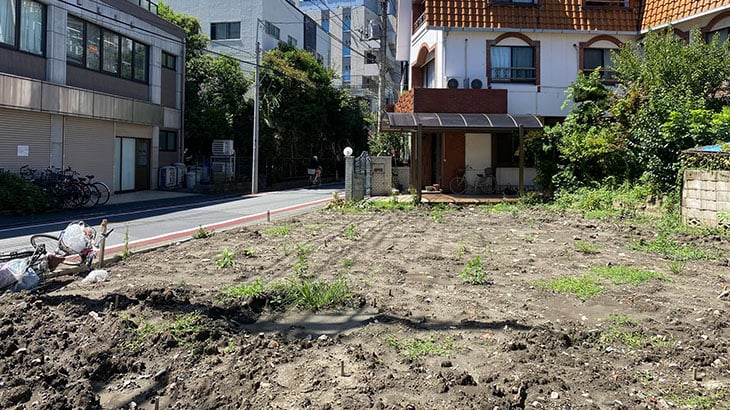
Market Information2022.7.12
What is the most updated land value in Tokyo and the changes in 5 years ?
In Japan, property prices are decided by both land and buildings value. Although there is a tendency that the […]

Property Knowledge2022.7.4
NEW OR OLD? Which one is better for property investment in Japan?
Is it better to invest in a new construction property or a second-hand one?What are the factors affecting the […]

Property Knowledge2022.4.28
What are the costs incurred when buying a property in Japan?
Before deciding to purchase a property in Japan, it is important to have a basic understanding on the required […]
Subscribe for Latest Property News
Don’t miss out! Subscribe now to stay tuned to the latest trends, news, and listings in Japan’s real estate market.



